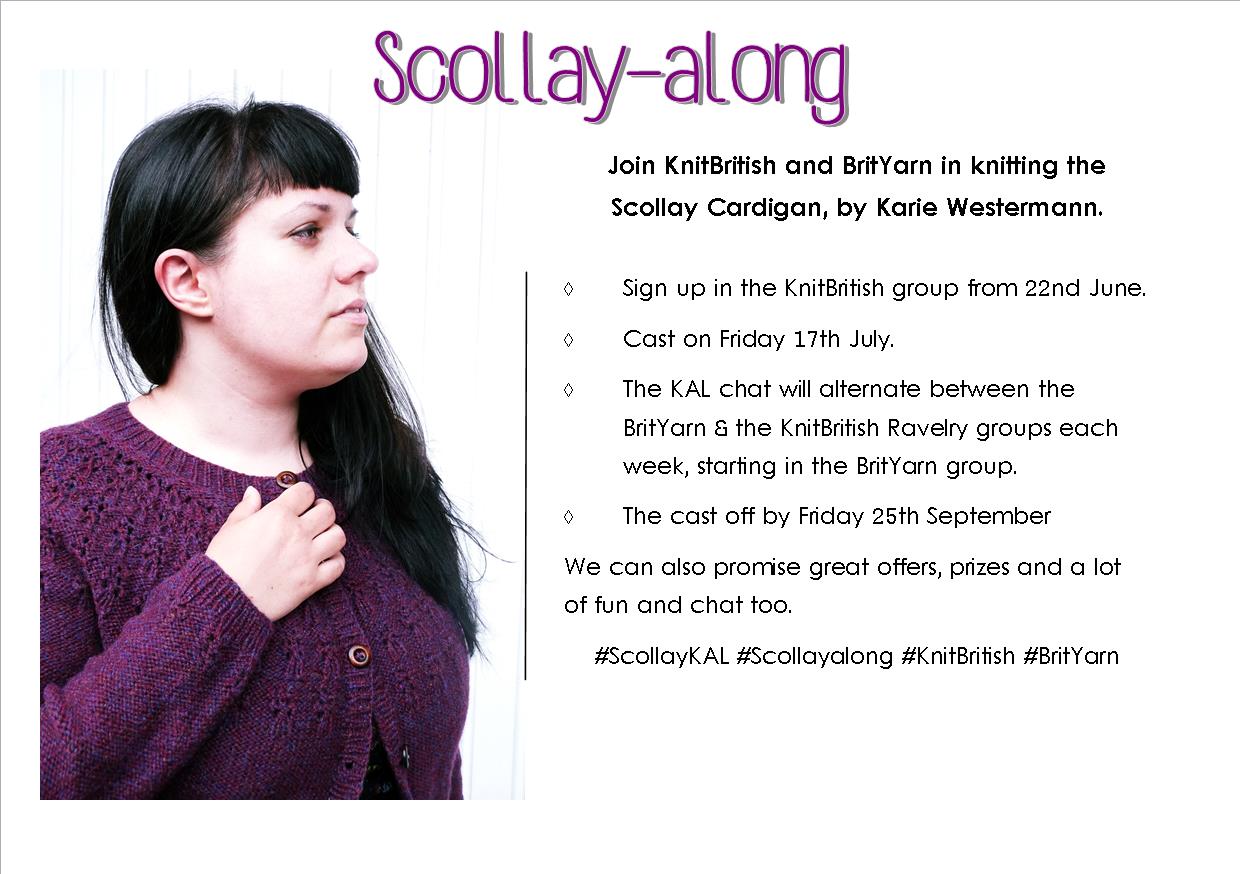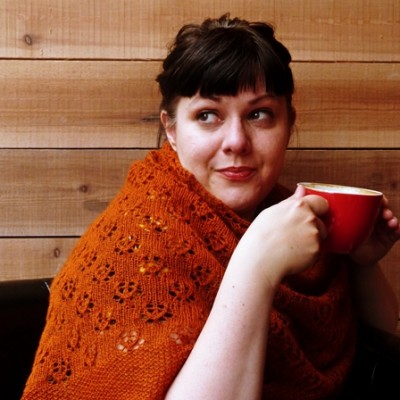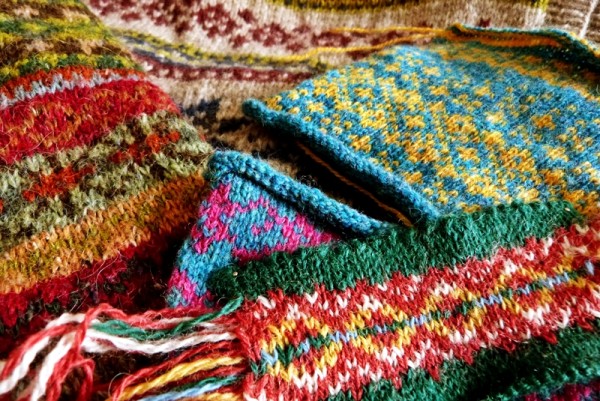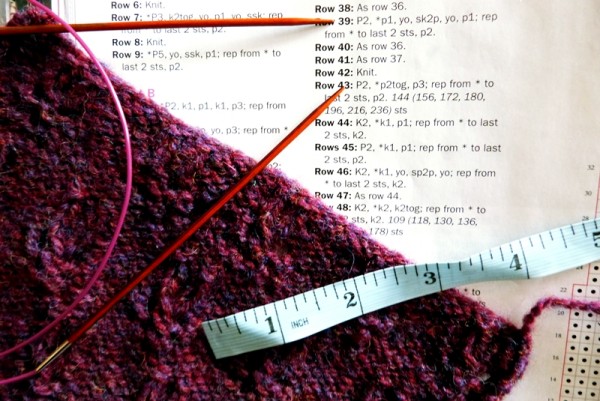 The Scollay-along is having its Cast-On Party this Friday, July 17. It is not too late to sign up in the Ravelry thread - people have been swatching, discussing yarn choices, and pondering buttons. I have also had a few questions about which size to choose, so I thought I'd write a few words about fit, measurements, and how to think about sizing.
The Scollay-along is having its Cast-On Party this Friday, July 17. It is not too late to sign up in the Ravelry thread - people have been swatching, discussing yarn choices, and pondering buttons. I have also had a few questions about which size to choose, so I thought I'd write a few words about fit, measurements, and how to think about sizing.
First a little story.
Once upon a time I worked for a yarn company helping people figuring out sizing and fit. One thing happened again and again: people saw a super-slouchy jumper, decided they wanted to knit it and then went up two sizes because they wanted a super-slouchy look. I always wanted to cry at this stage, because the slouchy look was built into the design. Part of being a designer is thinking about how we want things to fit and we do most of the work so you can just start knitting.
So, let's start by looking at the cardigan itself. I will share my fit consideration - then we'll discuss how you can make informed decisions based upon that!

On the left, you see the cardigan on me; on the right, you see the Knit Now photo shoot of the same cardigan! Lyndsey and I are both wearing the 1X cardigan, but as you can see we look vastly different.
Scollay was designed to be a go-to cardigan with a few inches of ease. Ease means there is extra room to spare between the circumference of your bust and the circumference of your cardigan. Designers think about ease when we design - and you need to check how much ease is included in the garment when you are choosing your size and you also need to think about how you like to wear clothes.
Lyndsey wears Scollay with the ease I intended. It makes for a casual cardigan which will look fabulous over a t-shirt and a pair of jeans. It has a relaxed fit which makes it easy to wear.
Quick Recap: designers think about how we want our designs to look when we write the patterns. Scollay is designed to be worn with slight ease.
Although I am wearing the same cardigan, I am far more busty than the gorgeous model and so I am wearing Scollay with negative ease. Negative ease means that my bust circumference is larger than the circumference of the garment. I am wearing Scollay with roughly 1.5 inches of negative ease - but because knitted fabric has a lot of give, you are not seeing gaping buttonbands (unlike what you'd expect from woven material). The negative ease showcases the stitch pattern a bit more and I personally like the snuggly feeling I get with negative ease.
Be honest with yourself about how you like your Scollay cardigan to fit. How do you usually wear cardigans? Do you like a relaxed fit? Then pick the size that is closest to your normal size. Do you like how it fits me with zero-to-negative ease? Then pick a size down.
This is the really important bit: find out your measurements.
For some reason (i.e. society and arbitrary high street sizing) we tend to think ourself far bigger than we usually are. I know a lovely lady who's about a size L who knitted herself a size 3XL cardigan because she went with what she thought she saw in the mirror rather than her measurements. One of the things I really love about knitting is that it allows us to make clothes that fits us in shapes and colours that flatter us - so get a friend to help you measure yourself. Be honest with yourself and write the measurements down. Then compare your measurements with the ones given in the pattern (which includes ease, so choose your size with that in mind)
Customising Your Scollay Cardigan
I have really long arms and a short body - the sleeves fit me perfectly and the cardigan hits me just below the hips. You may want 3/4-length sleeves and a slightly shorter body that hits you just above the hips (or maybe you have a long torso and want your cardigan longer). Because all the stitch pattern work happens by the edges and the yoke, it is fairly straightforward to customise the length of the sleeves and the body. There is no recalculation of the lace pattern - you just need to work fewer/more inches in reverse stocking stitch before working increases/decreases.
Likewise you may find you have very generous hips, so cast on for a larger size and decrease down to a smaller size. Or you have very slender wrists, which means you start out with a much smaller size and work your way up to the right number of stitches. Or if you feel you want to include short rows for your bust, you'll be relieved to know you just need to work them in forgiving reverse stocking stitch.
There will be plenty of help, laughter, and chat in the KAL threads.
Thank you to Kate Heppell for kind permission to use the photo of Lyndsey in the cardigan. Photo by Dan Walmsley for Practical Publishing; hair & make-up Cassie Stewart; styling by Kate Heppell. My photo's taken by David Fraser.
 Time is a rare gift. This month sees friends and family celebrating big birthdays or momentous life changes; I am travelling a lot for work; and I struggle to find pockets of time between it all. The air now has a slight touch of chill to it in the mornings or evenings. The world is slowly tilting and I feel the pull inside me to embrace it.
Time is a rare gift. This month sees friends and family celebrating big birthdays or momentous life changes; I am travelling a lot for work; and I struggle to find pockets of time between it all. The air now has a slight touch of chill to it in the mornings or evenings. The world is slowly tilting and I feel the pull inside me to embrace it. Skovtur [Skorw-tur] uses two colours of Thick Pirkkakanka from Midwinter Yarns. I used the Teal and the Deep Orange (I also used this colourway in the Fika shawl but in the thinner Pirkkalanka yarn) - but the world is your oyster when it comes to colour combinations.
Skovtur [Skorw-tur] uses two colours of Thick Pirkkakanka from Midwinter Yarns. I used the Teal and the Deep Orange (I also used this colourway in the Fika shawl but in the thinner Pirkkalanka yarn) - but the world is your oyster when it comes to colour combinations.
 Yesterday was a bit of a hectic day. We walked all over Glasgow trying to get good photos of the first pattern in the Hygge collection. After having posed in three different locations, David said to me: "I never asked. What's the shawl's name?" - I replied: "Fika. Fee-ka. It's a Swedish word for a coffee-break where you spend quality time sorting out the world with your loved ones."
Silence.
Yesterday was a bit of a hectic day. We walked all over Glasgow trying to get good photos of the first pattern in the Hygge collection. After having posed in three different locations, David said to me: "I never asked. What's the shawl's name?" - I replied: "Fika. Fee-ka. It's a Swedish word for a coffee-break where you spend quality time sorting out the world with your loved ones."
Silence. I am currently putting last touches to my workshop schedule for late 2015/early 2016. I am sitting on my hands a little bit as some of the events are not mine to announce, but I can give you the heads up on two of the several one-offs I will be doing.
I am currently putting last touches to my workshop schedule for late 2015/early 2016. I am sitting on my hands a little bit as some of the events are not mine to announce, but I can give you the heads up on two of the several one-offs I will be doing.




 The
The 